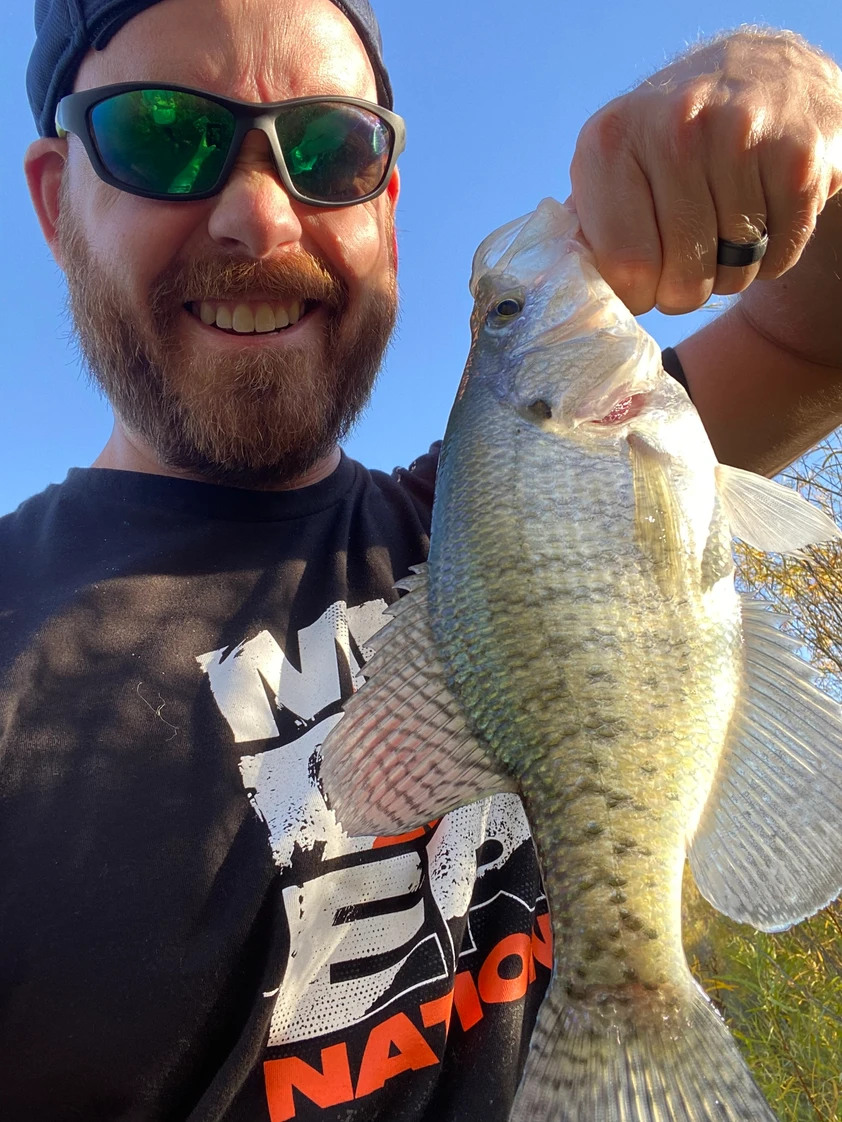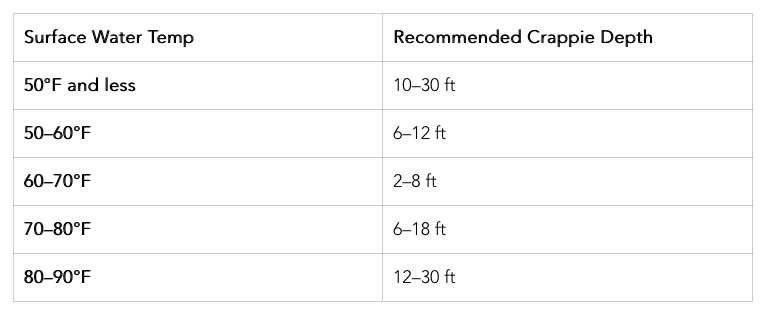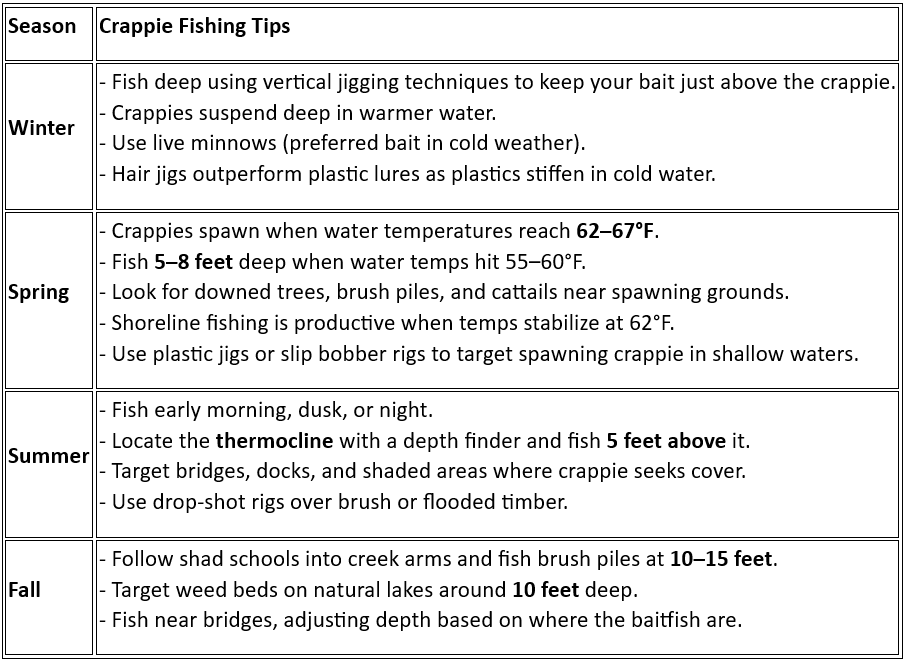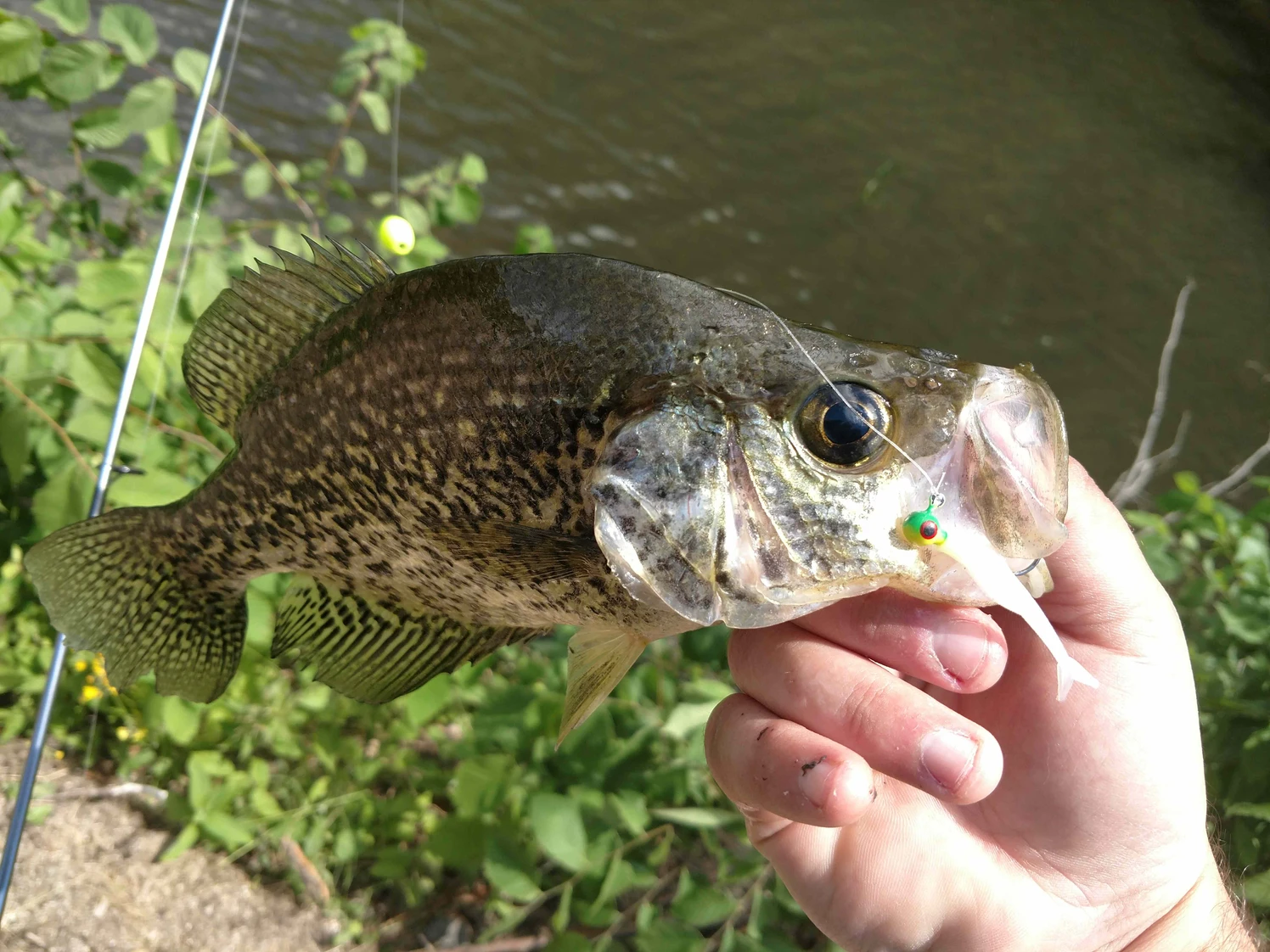If you’ve ever wondered when crappie start biting, when crappie spawn, or what time of year is best for crappie fishing, this guide has you covered. Crappie follow specific seasonal patterns and are heavily influenced by water temperature. Understanding these key factors will help you know when crappie are most active, where to find them, and how to catch slabs all year round.

How to Catch Slabs in Every Season and When Crappie Start Biting
Crappie Fishing Depth vs. Surface Water Temperature
Best Time to Crappie Fish: Seasonal Breakdown
Crappie Fishing Weather and Seasonal Patterns
Best Time of Day to Catch Crappie
Crappie Fishing Tips and Techniques
How to Catch Slabs in Every Season and When Crappie Start Biting
Crappie Fishing Depth vs. Surface Water Temperature
 Note: Fishing deeper than 20 feet can cause barotrauma, a pressure-related injury. If you catch crappie this deep, it’s best to keep them as they likely won’t survive being released.
Note: Fishing deeper than 20 feet can cause barotrauma, a pressure-related injury. If you catch crappie this deep, it’s best to keep them as they likely won’t survive being released.
When Do Crappie Spawn?
Crappie typically spawn in the spring when water temperatures reach 62–67°F. This temperature range triggers their movement to shallow, protected waters to fan out spawning beds.
Key Crappie Spawning Facts:
- Where: Look for shallow areas with a soft bottom, brush piles, or gravel beds.
- When: Spawning activity begins once surface water temps consistently hold at 62°F.
- Depth: Most spawning occurs in 2–8 feet of water.
- What: Male Crappie actively protect the egg beds. Jigs trigger easy bites making it easy to catch a ton of fish.
In Texas, crappie spawn earlier, typically from late February through April. In Ohio and other midwestern states, spawning peaks from April through early May, depending on weather patterns. In Minnesota, crappies typically spawn May through June.
Best Time to Crappie Fish: Seasonal Breakdown
- Spring: Best time to fish as crappie spawn in shallow water.
- Summer: Fish dawn, dusk, or at night when crappie seek shade and cooler temperatures.
- Fall: Focus on mid-depth areas as crappie follow shad into creeks.
- Winter: Target deep water and fish slow—crappie metabolism slows in cold weather.
Crappie Fishing Weather and Seasonal Patterns
- Spring: Rising water temps trigger crappie movement into shallow waters.
- Summer: Crappie move deeper during hot weather but remain active near structure. Crappie typically hold a few feet more shallow than the thermocline. Using your depth finder
- Fall: Cooler temps push crappie back into shallow areas as they feed heavily.
- Winter: Crappie hold deep but still bite live bait and slow-moving jigs.
Best Time of Day to Catch Crappie
- Morning: Early morning is productive, especially in summer and fall.
- Dusk: Crappie are more active during low-light conditions.
- Night: Night fishing with lights can attract baitfish and crappie to your spot.
Crappie Fishing Tips and Techniques
- Use the Right Bait: I prefer minnows and hair jigs in cold temperatures and plastics in warm temperatures (60°F and greater).
- Follow Water Temps: Use the crappie depth chart above to adjust your fishing strategy.
- Find Cover: Crappie congregate around brush, fallen trees, docks, and weed beds. They attack vertically upward, so suspending your bait a few feet above the fish is key to triggering bites.
- Stay Mobile: If you’re not getting bites, move to a new spot and vary your depths and bait color.
Conclusion
Understanding crappie seasonal patterns and water temperature triggers will improve your fishing success. The best time to crappie fish is during their spring spawn (62–67°F), but crappie are catchable year-round if you follow the seasonal tips and depth recommendations.
So, next time you’re asking, “When do crappie start biting?” or “When is crappie season?”, you’ll know exactly where to look and how to catch them!



0 Comments